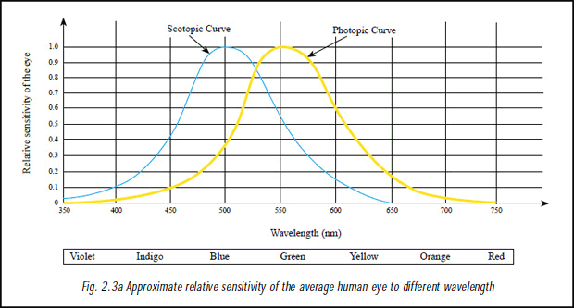Language of Light
2.Concepts
2.3 PHOTOMETRY
Photometry involves measurement of the psychophysical attributes of electromagnetic energy that is visible to the human eye. The use of the term 'luminous', which refers to visible light, defines photometry in terms of human perception.
Photometry becomes a modern science in 1942, when Commission Internationale de l'Eclairage (CIE) met to define the response of the average human eye. CIE measured the light-adapted eyes of a sizeable sample group, and compile the data into the CIE Standard Luminosity Function (widely known as photopic curve - chromatic perception at normal state, and scotopic curve - achromatic perception at low level of illuminance. – see Fig.2.3a).

The photometric quantities are related to the corresponding radiometric quantities by the CIE Standard Luminosity Function. We can think of the luminosity function as the transfer function of a filter which approximates the behaviours of the average human eye (Fig. 2.3b).
Photometry consists of four basic concepts, namely the luminous flux, luminous intensity, illuminance, and luminance.


